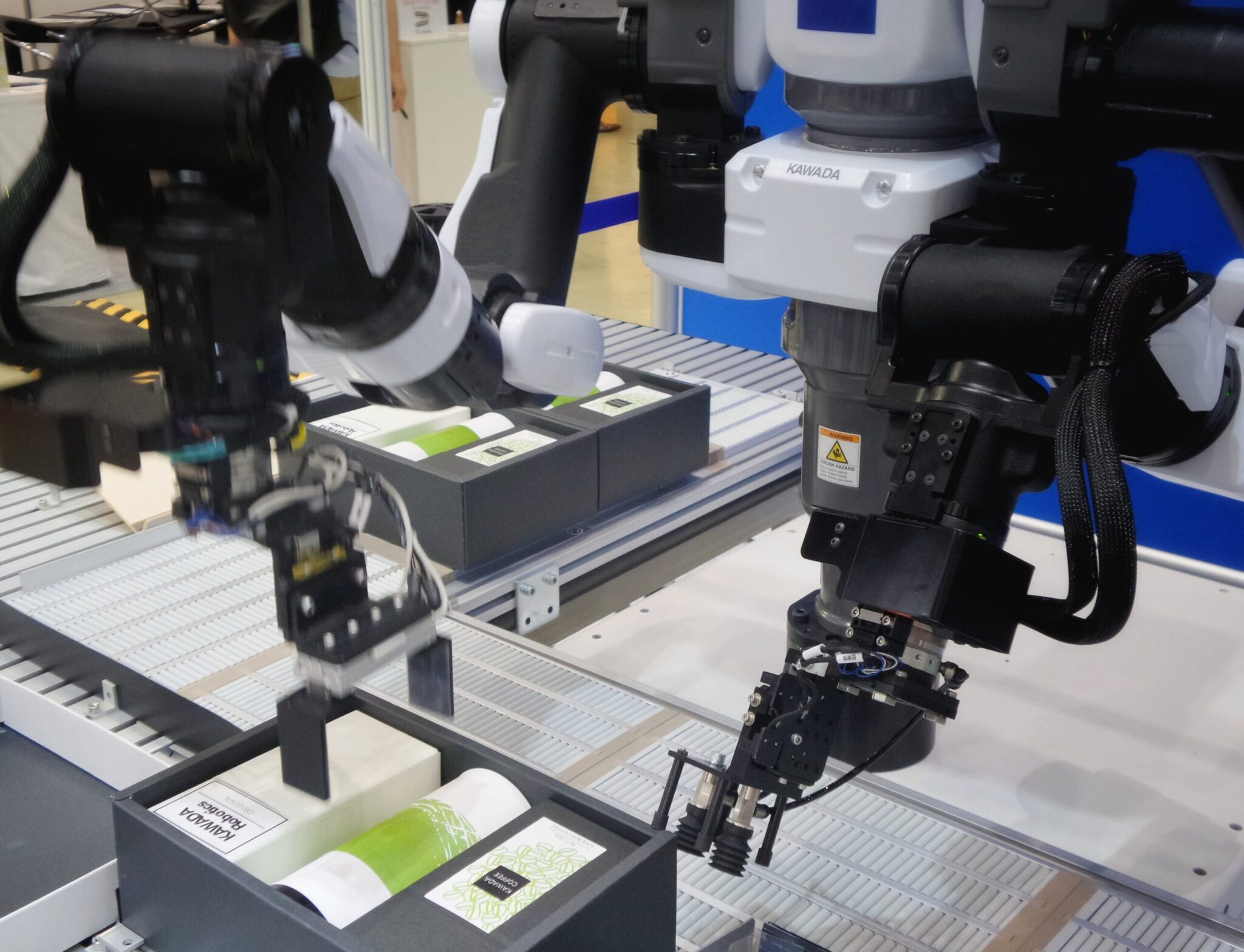Industrial Robots Take on the Tough Jobs
Across industries, industrial robots and robotics applications are solving problems by going where humans can’t, shouldn’t, or don’t want to go.
Today’s industrial robots are tasked with doing more of the work formerly done by people, as well as a variety of jobs that can only be done efficiently through automation. From homes to hospitals to building sites and factory floors — and even in space — robots are solving problems related to labor shortages, high costs, and hazardous environments. They are ideal for tasks that fall under the three D’s: dangerous, dirty, or dull, as well as for tasks that require high volumes and precision, such as the manufacture of semiconductors.

Building semiconductor chips involves hundreds of processes, and robots are involved in nearly every step. Around the world, $1 to $2 billion semiconductor manufacturing plants, known as fabs (for fabrication), are filled with automation. “Robots are doing everything — etching the pathways, terminating and bonding them to an array of pins so they can be soldered to a circuit board, and finally packaging the product in a housing to protect it from the environment. All these processes to build a semiconductor chip are amazing, and almost all of it is done, in one way or another, by a specialized robot, automation system, or processing machine,” said John Palahnuk, vice president engineering at Cicoil.

Automated wafer processing equipment for the semiconductor industry from Cicoil (Trexon).
In addition to performing these tasks, moving the product from one robot or processing machine to the next is accomplished through automation. “Transportation is done through pods that run automatically on tracks. The pods have tags on them and they know where to go. When a process is done, the wafer is moved to a front loader and an overhead system comes in with a carrier, which is a little robot, that picks it up and moves along the tracks to the next location to be loaded into the next front loader or its robotic arm or whatever apparatus is automatically grabbing it, doing the next step, and out loading it to the next process. It’s really impressive to see all these automated pieces of equipment everywhere processing these wafers,” Palahnuk said. He explained that there are very few people in the fabs now, compared to in the early stages of wafer processing when a lot of this work was done with manual and semi-manual benches and machines.

Pre-made VULCON M12 cable assemblies from NorComp are routed throughout these autonomous floor care and cleaning robots for Ethernet data, CAN Bus signaling, and sensor power/data.
Many robotics applications are not what people typically think of when they think of robots. For example, missiles used by the military are, in fact, robots. “A robot is an electromechanical apparatus driven by software to accomplish tasks,” said Palahnuk. A missile doesn’t have arms and it’s not picking things up, he explained, but in every aspect, it meets the criteria of a robot. “It is an apparatus that has a task to do. It has software and artificial intelligence that define its mission and an array of sensors that make it keenly aware of its environment. It adjusts and adapts along the way, from when it starts its mission to when it successfully completes its mission. And it does move, just not like people think a traditional robot does. But it’s moving in three dimensional space in the atmosphere. And so, in many ways, it is a robot, and quite an effective one for its task.”
In space applications, robots in the form of rovers explore the surface of Mars, performing tasks that are impossible for people to do. While the rover may be thought of as a vehicle, it is definitely a robot, Palahnuk said. “Even vehicles on Earth are turning into robots,” he added, “as they become more self-reliant, using advanced software to make decisions.”
Selecting Connector and Cable Assemblies for Industrial Robots
Palahnuk shared that the biggest influences on how the connectors used in these applications will look and function are the work that the robot will do and the environment in which it will operate. Robots in an office space or a cleanroom environment don’t have the same issues to contend with as those in harsh environments. Typically, a robot in these spaces won’t require high currents to handle big loads. The connectors, therefore, will be relatively low cost and small.

Cleanroom cable assembly with multiple connectors for automated optical processing equipment Cicoil.
On the other hand, he said, heavy industrial robots that are in harsh environments, may be exposed to large temperature swings, shock and vibration, gases, dust, and humidity. If the robots are lifting and moving heavy loads, they will need connectors that are heavier duty with larger contacts to ensure against intermittent connections throughout the life of the equipment. Often, these robots are in remote environments, like space, where they can’t easily be repaired, so the connectors need to be durable enough to function properly for an indefinite amount of time.
Sensors for Safety in Industrial Robots
Robots that work alongside humans require sensors to maintain awareness of their surroundings. For the safety and protection of the people and the equipment, sensors allow these cobots, as they are called, to track the presence and movement of the people working with or near them using technologies such as lidar (light detection and ranging), RFID (radio frequency identification) tracking, and 3D vision. Sensors that simulate human senses (e.g., sight, hearing, and touch) are also incorporated to help cobots safely accelerate, monitor temperature, and more.

TE Connectivity’s Cobot Safety Torque Sensor employs two electrically segregated channels with no common cause failure to meet new ISO 13849 Category 4PL safety requirements. It is optimized to reduce axial stress, radial load, and tilting movement susceptibility for improved accuracy.
The capabilities for automation continue to advance along with the demand for products and work that can’t be met solely by a human work force. Industrial robots and automation technology are filling the gaps and creating new opportunities. As highly complex machines, robotic devices often contain an array of specialized electromechanics in the form of computers, sensors, hydraulic pumps, motors, and network connections. Connector suppliers are tasked with finding interconnect solutions that reduce the size, weight, and power consumption needs, while addressing power requirements, signaling, and high-speed data transmission.
To learn more about the companies mentioned in this article, visit the Preferred Supplier pages for Cicoil (Trexon), NorComp, and TE Connectivity.
Like this article? Check out our other articles on Automation and New Technology, ourIndustrial Market Page, and our 2022 Article Archive.
Subscribe to our weekly e-newsletters, follow us on LinkedIn, Twitter, and Facebook, and check out our eBook archives for more applicable, expert-informed connectivity content.
- Sealing Success: Overmolding for More Secure Connections - April 23, 2024
- Medical Cable Assemblies Product Roundup - April 23, 2024
- Mezzanine Connectors Product Roundup - April 16, 2024





